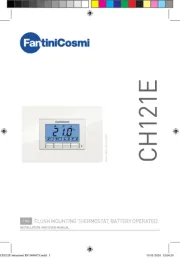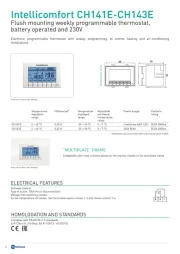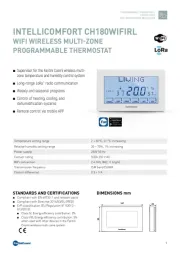Fantini Cosmi L22 Bedienungsanleitung
Lies die bedienungsanleitung für Fantini Cosmi L22 (1 Seiten) kostenlos online; sie gehört zur Kategorie Thermostat. Dieses Handbuch wurde von 13 Personen als hilfreich bewertet und erhielt im Schnitt 4.5 Sterne aus 7 Bewertungen. Hast du eine Frage zu Fantini Cosmi L22 oder möchtest du andere Nutzer dieses Produkts befragen? Stelle eine Frage
Seite 1/1

INSTRUCTIONS FOR USE
Thank you for having chosen a Fantini Cosmi product. Before installing the instrument, please read these instructions carefully
to ensure maximum performance and safety.
DESCRIPTION
INDICATIONS
Thermostat output
Fig.1 — Front panel
.nottub tniopteS Increase button.
.nottub esaerceD Exit / Stand-by button.
INSTALLATION
Insert the controller through a hole measuring 71x29 mm.
Make sure that electrical connections comply with the paragraph “wiring diagrams”. To reduce the eects of electromagnetic
disturbance, keep the sensor and signal cables well separate from the power wires.
Fix the controller to the panel by means of the suitable clips, by pressingly gently; if fi
tted, check that the rubber gasket
adheres to the panel perfectly, in order to prevent debris and moisture infi
ltration to the back of the instrument.
Place the probe T1 inside the room in a point that truly represents the temperature of the stored product.
OPERATION
DISPLAY
During normal operation, the display shows either the temperature measured or one of the following indications:
OFF
Controller in stand-by
E1
In tuning: timeout1 error
OR
Probe T1 overrange or failure
E2
In tuning: timeout2 error
TUN / 5.4
Controller in autotuning
E3
In tuning: overrange error
SETPOINT (display and modifi
cation of desired temperature value)
press button
for at least half second, to display the setpoint value.
By keeping button
pressed, use button
or
to set the desired value (adjustment is within the minimum
SPL
and the
maximum limit).SPH
When button
is released, the new value is stored.
STAND-BY
Button
, when pressed for 3 seconds, allows the controller to be put on a standby or output control to be resumed (with
SB =YES only).
CONTROLLER AUTOTUNING IN PID MODE
Before starting
Adjust the setpoint
1SP
to the desired value.
Set 1Y =PID.
Make sure that the
1PB
value matches the desired control mode (
1PB 1PB<0 for heating; >0 for refrigeration).
Start autotuning
Keep buttons
+
pressed for 3 seconds.
1CT blinks on the display.
With +
or
set the cycle time in order to defi
ne the dynamic of the process to be controlled.
To start autotuning press
+
or wait for 30 seconds. To abort the autotuning function, press
X
.
During autotuning
During the entire autotuning phase, the display alternates
with the actual temperature measured.
In case of power failure, when power is resumed, after the initial autotest phase, the controller resumes the autotuning
function.
To abort the autotuning, without modifying the previous control parameters, keep button
X
pressed for 3 seconds.
After the autotuning has taken place successfully, the controller updates the control parameters and start to control.
Errors
If the autotuning function failed, the display shows an error code:
E1 timeout1 error: the controller could not bring the temperature within the proportional band. Increase
1SP in case of
heating control, vice versa, decrease
1SP in case of refrigerating control and re-start the process.
E2 timeout2 error: the autotuning has not ended within the maximum time allowed (1000 cycle times). Re-start the autotuning
process and set a longer cycle time
1CT .
E3 temperature overrange: check that the error was not caused by a probe malfunction, then decrease
1SP in case of heating
control, vice versa increase
1SP in case of refrigerating control and then re-start the process.
To eliminate the error indication and return to the normal mode, press button
X
.
Control improvement
To reduce overshoot, reduce the integral action reset
1AR .
To increase the response speed of the system, reduce the proportional band
1PB . Caution: doing this makes the system less
stable.
To reduce swings in steady-state temperature, increase the integral action time
1IT ; system stability is thus increased,
although its response speed is decreased.
To increase the speed of response to the variations in temperature, increase the derivative action time
1DT . Caution: a high
value makes the system sensitive to small variations and it may be a source of instability.
RECALIBRATION
Have a precision reference thermometer or a calibrator to hand.
Ensure that
OS1 SIM=0 and =0.
Switch the controller o then on again.
During the auto-test phase, press buttons
X
+
, and keep them pressed till the controller shows
0AD .
With buttons
and
select or : allows a calibration of 0, inserting a constant correction over the whole 0AD SAD 0AD
scale of measurement.
SAD
allows a calibration of the top part of the measurement scale with a proportional correction
between the calibration point and 0.
Press
to display the value and then use
+
or
to make the read value coincide with the value measured by the
reference instrument.
Exit from calibration by pressing button
X
.
CONFIGURATION PARAMETERS
Setup menu is accessed by pressing buttons
+
X
for 5 seconds.
With button
or
select the parameter to be modified.
Press button
to display the value.
By keeping button
pressed, use button
or
to set the desired value.
When button
is released, the newly programmed value is stored and the following parameter is displayed.
To exit from the setup, press button
X
or wait for 30 seconds.
PAR
RANGE DESCRIPTION
SCL
1°C;
2°C;
°F
Readout scale.
1°C : measuring range
L02B-- rof C°501/9.99 … 9.91-/04-
L22E-- rof .H.r% 100 … 0.0
L22E-- rof .H.r% 100 … 0.0
2°C : measuring range -40 … 105°C for L02B--
°F : measuring range -40 … 221°F for L02B--
Caution: upon changing the SCL value, it is then absolutely necessary to re-congure the parameters relevant to the
absolute and relative temperatures (
SPL SPH 1SP, , , 1HY, etc..).
SPL
-50..SPH Minimum limit for
1SP setting
SPH
SPL.150° Maximum limit for
1SP setting
1SP
SPL... SPH Setpoint (value to be maintained in the room).
1Y
HY / PID Control mode.
With 1Y
=HY you select control with hysteresis: parameters
1HY and 1CT are used.
With 1Y
=PID you select a Proportional-Integral-Derivative control mode: parameters
1PB, 1IT, 1DT, 1AR, 1CT will
be used.
1HY
-19.9…19.9°C Thermostat dierential [control with hysteresis].
-19.9..19.9%r.H
Set 1HY
on a value greater than zero to make the output work in refrigerating mode, vice versa set on a value lower
than zero to make the output work in heating mode. With
1HY=0 the output is always o.
OFF
ON
1SP 1SP+1HY
T[°]
OFF
ON
1SP1SP-1HY
T[°]
Fig. 1a. ON/OFF refrigerating control (
1Y=HY, 1HY
>0) Fig. 1b. ON/OFF heating control (
1Y=HY, 1HY<0)
1PB
-19.9…19.9°C Proportional band [PID control].
-19.9..19.9%r.H
Set 1PB
on a value greater than zero to make the output work
in refrigerating mode, vice versa set on a value lower than
zero to make the output work in heating mode. With
1PB =0
the output is always o.
With a proportional controller, the temperature is controlled
by varying the time of activation of the output. The nearer the
temperature to set point, the less time of activation. A small
proportional band increases the promptness of response
of the system to temperature variations, but tends to make
it less stable. A purely proportional control stabilises the
temperature within the proportional band but does not cancel
the deviation from the set point.
1IT
0…999s Integral action time [PID control].
The steady-state e
rror is cancelled by inserting an
integral action into the control system. The integral action
time, determines the speed with which the steady-state
temperature is achieved, but a high speed (
1IT low) may be
the cause of overshoot and instability in the response. With
1IT=0 the integral control is disabled.
1DT
0…999s Derivative action time [PID control].
Response overshoot in a system controlled by a Proportional-
Derivative controller may be reduced by inserting a derivative
action in the control. A high derivative action (1
DT high)
makes the system very sensitive to small temperature
variations and causes instability. With 1DT= 0 the derivative
control is disabled.
1AR
0…100% Reset of integral action time referred to
1PB [PID control].
Decreasing the parameter 1AR
reduces the integral control action zone, and consequently the overshoot (see gure
on paragraph 1IT).
1CT
0…255s Cycle time.
In the ON/OFF control (
1Y
=HY), after the output has switched on or o, it will remain in the new state for a minimum
time of 1CT seconds, regardless of the temperature value.
In the PID control (1Y
=PID), the cycle time is the period of time in which the output completes a cycle (Time ON +
Time OFF). The faster the system to be controlled reacts to temperature changes, the smaller the cycle time should
be, in order to obtain a greater temperature stability and less sensitivity to load variations.
1PF
ON / OFF Output state in case of probe failure.
BAU
NON / SBY With BAU =SBY, the stand-by button is enabled.
SIM
0...100 Display slowdown.
OS1
-12.5..12.5°C Probe T1 oset.
ADR
1...255 address for PC communication. (function not available)
WIRING DIAGRAMS
TECHNICAL DATA
Power supply
Relay outputs
Inputs
Measuring Range
Measuring accuracy
L22E…: <±0.7%r.H. in the measuring range
L02B…: <±0.3°C -40…100°C; ±1°C out of that range
Operating conditions
-10 … +50°C; 15…80% r.H.
CE (Reference Norms)
EN60730-1; EN60730-2-9;
EN55022 (Class B);
EN50082-1
Front protection
IP55
1SP
1PB
Temperature
Overshoot
Steady-state error
Process
temperature
Time
1SP
1PB
Temperature
Overshoot
Process
temperature
Time
1PBx1AR%
integral control
action area
1SP
1PB
Temperature
Overshoot
Process
temperature
Time
6 7
OUT1
16(4)A
2
3
4
9 10
11
rH
V
VINV+ V-
230V~ (L22EM1A) / 12Vac/dc (L22EI1A)
L22EI1A-L22EM1A
2
3
4
6 7
OUT1
16(4)A
10
11
230V~ (L02BM1A) / 12Vac/dc (L02BI1A)
L02BI1A-L02BM1A
L02BI1A/L22EI1A 12Vac/dc±10%, 3W
L02BM1A/L22EM1A 230Vac±10%, 50/60Hz, 3W
OUT1 16(4)A 240Vac
L22E--: 0-1V (LS160A)
L02B--: NTC 10K (LS130)
L22E--: 0…100% U.R.
L02B--: -40…105°C
L02B... L22E
FANTINI COSMI S.p.A.
Via dell’Osio, 6
20090 Caleppio di Settala, Milano, ITALY
Ph. +39 02 956821 | Fax +39 02 95307006
info@fantinicosmi.it
export@fantinicosmi.it
Produktspezifikationen
| Marke: | Fantini Cosmi |
| Kategorie: | Thermostat |
| Modell: | L22 |
Brauchst du Hilfe?
Wenn Sie Hilfe mit Fantini Cosmi L22 benötigen, stellen Sie unten eine Frage und andere Benutzer werden Ihnen antworten
Bedienungsanleitung Thermostat Fantini Cosmi
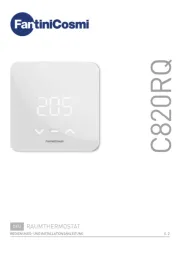
20 Juni 2025

20 Juni 2025
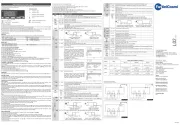
20 Juni 2025
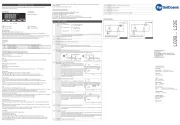
20 Juni 2025
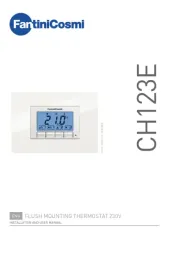
20 Juni 2025

19 Juni 2025

19 Juni 2025
Bedienungsanleitung Thermostat
- THERMAFLEX
- Remko
- Ouellet
- Orbis
- Yokis
- Siemens
- Ecobee
- Vaillant
- Cotech
- PECO
- Cepra
- Magnum
- Heidenfeld
- Tado
- Veria
Neueste Bedienungsanleitung für -Kategorien-
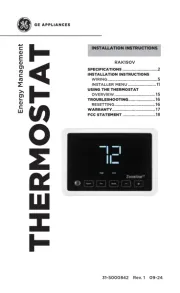
7 August 2025
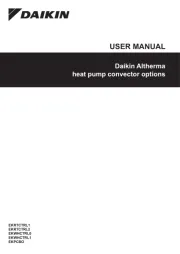
3 August 2025
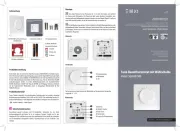
1 August 2025
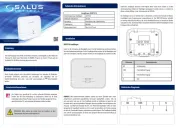
31 Juli 2025

31 Juli 2025
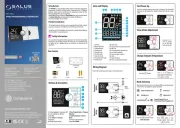
31 Juli 2025
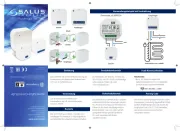
31 Juli 2025
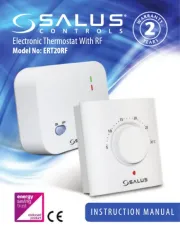
31 Juli 2025
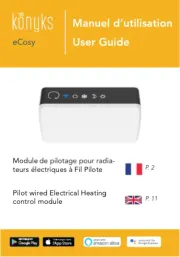
30 Juli 2025

28 Juli 2025
